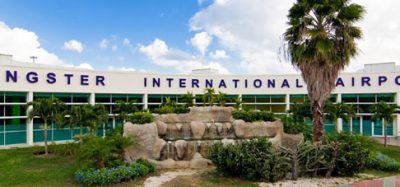AAA highlights unprecedented hit experienced following COVID-19
Posted: 17 March 2020 | International Airport Review | No comments yet
Following the COVID-19 outbreak, Australian Airports Association’s CEO has highlighted the impact suffered, and what needs to be done.


Australian Airports Association’s (AAA) Chief Executive Officer, Simon Bourke, has highlighted how Australia’s major airports are currently dealing with an unprecedented hit to their operations – with aeronautical revenues for the year expected to fall by more than half a billion dollars as a result of coronavirus (COVID-19) – and stressed that airports are continuing to support their passengers and partners, even as they feel the pain of a significant drop in demand.
Bourke said: “Airports are essential infrastructure for our country. Our focus, in the face of this unprecedented challenge, is on looking after the passengers who will continue to fly and the many people working at airport precincts across the country. We know that every part of the industry is feeling the impact of this situation and our airports are working with all of the airlines, retailers and businesses that rely on us and the passengers we serve. Every passenger who doesn’t use the airport is a loss not only to us, but to the retailers in our terminals, the taxi and Uber drivers, and other airport businesses.”
He continued, emphasising the struggles currently being experienced, but also how those struggles must be mitigated carefully in order to avoid impacting the airports once passenger demand begins to increase again: “At the same time, airports’ costs change very little. We still need to keep the runways open and the lights on in the terminals. We still need to keep our airports safe and secure as we welcome the passengers that continue to fly. We must also be ready for the post-virus rebound and continue to plan for a strong recovery. Airports are taking a hit to maintain their investment and infrastructure pipelines which are so critical in terms of keeping the airport open, and keeping people in jobs.”
Join our free webinar: Revolutionising India’s travel experience through the Digi Yatra biometric programme.
Air travel is booming, and airports worldwide need to move passengers faster and more efficiently. Join the Digi Yatra Foundation and IDEMIA to discover how this groundbreaking initiative has already enabled over 60 million seamless domestic journeys using biometric identity management.
Date: 16 Dec | Time: 09:00 GMT
rEGISTER NOW TO SECURE YOUR SPOT
Can’t attend live? No worries – register to receive the recording post-event.
Major Australian airports had already begun reporting significant decreases in passenger numbers during February 2020, even before the announcement that, due to the COVID-19 outbreak, new measures for international travel and historic capacity cuts would be implemented by Australia’s domestic airlines.
Bourke noted: “COVID-19 has, and will continue to, hit our income and operations with a severity not seen in this country before. The AAA estimates aeronautical revenue for Australia’s major airports will collectively fall by more than $500 million this year as significant reductions in airline capacity take effect. Revenue from aeronautical charges and other airport services are all dependent on passenger numbers and are being heavily impacted by lower demand. International arrivals are at their lowest levels since 2013 and airports feel the loss of every passenger several times over.”
Sydney Airport’s international traffic experienced a decrease of 16.8 per cent in February 2020, compared to 2019, and domestic traffic fell by 4.5 per cent. Melbourne Airport saw a 17 per cent fall in international passengers in February 2020, with 150,000 fewer people flying internationally compared to the same month in 2019. Brisbane Airport witnessed a 7.7 per cent decrease in international passengers in February 2020, with 34,000 fewer people flying internationally, compared to the same month in 2019. Bourke warned: “With new measures in place for international travellers and airline capacity cuts of up to 90 per cent, we expect to see further dramatic and immediate cuts to passenger numbers in the weeks ahead.”
Join our free webinar: Revolutionising India’s travel experience through the Digi Yatra biometric programme.
Air travel is booming, and airports worldwide need to move passengers faster and more efficiently. Join the Digi Yatra Foundation and IDEMIA to discover how this groundbreaking initiative has already enabled over 60 million seamless domestic journeys using biometric identity management.
Date: 16 Dec | Time: 09:00 GMT
rEGISTER NOW TO SECURE YOUR SPOT
Can’t attend live? No worries – register to receive the recording post-event.

















